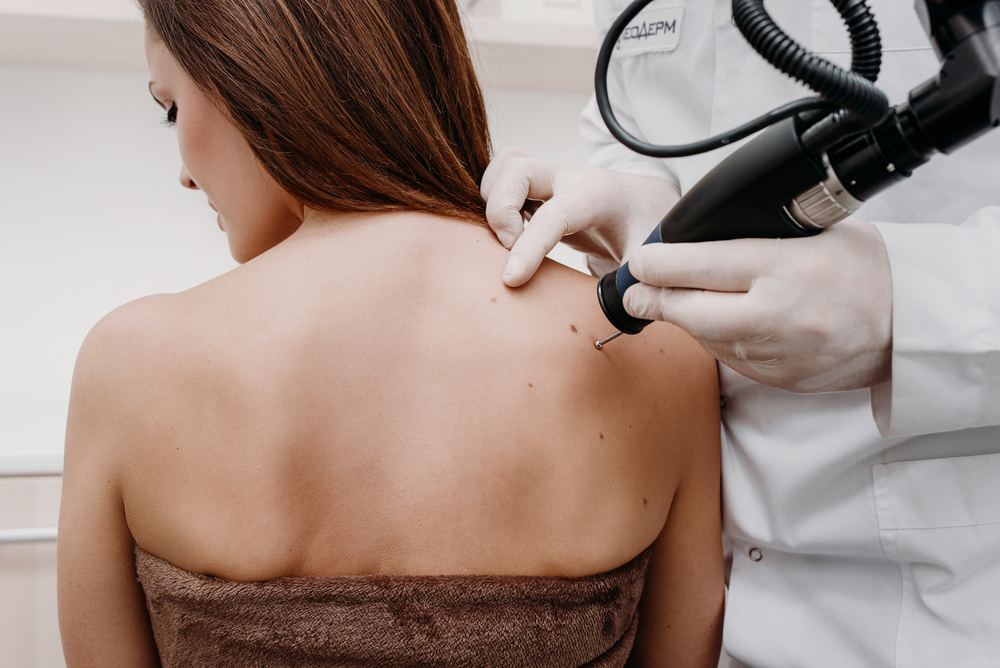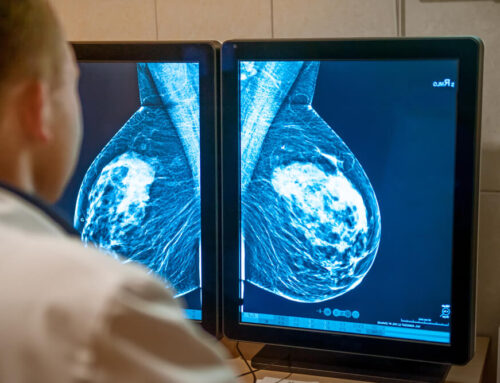Premalignant conditions, which we also may refer to as precancerous conditions, refer to atypical cells that are not cancer have the possibility to develop into cancerous cells if a patient doesn’t receive treatment. Some of these cells may have mild changes that may disappear without treatment, but they can take a long time to develop into cancer.
This article focuses on the premalignant conditions of the breast and the symptoms that patients may experience. We also describe how we treat a premalignant lesion and some preventive tips.
Exploring Precancerous Changes
Some precancerous changes can be manageable or severe, and we use different terms to describe them. These include:
- Hyperplasia: This means an increase in the number of abnormal cells, but they may seem normal under a microscope.
- Atypia: The cells are atypical or slightly abnormal and can develop due to an infection or inflammation.
- Metaplasia: There has been a change in the cells usually present in that specific body area. They look normal but are not the types of cells that we usually find in that tissue.
- Dysplasia: The cells are abnormal and are growing rapidly, and they are not arranged like normal cells.
- Carcinoma in situ: This is the most extreme type of change and requires a person to be treated, as the cells are abnormal and have an increased risk of developing into cancer.
People who have precancerous conditions should visit their physician regularly to receive immediate treatment if the cells turn into cancer.
So, what are the types of premalignant conditions of breasts? Read on to find out.

Types of Premalignant Conditions
There are different types of premalignant conditions of breasts, such as:
Ductal carcinoma in situ (DCIS)
DCIS is a premalignant lesion that is located inside the ducts’ walls, but they have not spread to the surrounding area. As a result, they are unable to affect the blood and lymphatic vessels. Sometimes, we may refer to DCIS as intraductal carcinoma.
Symptoms of DCIS
Most of the time, people who have DCIS do not experience any symptoms, but we detect it through routine breast screening as the patient may have a lump or discharge coming out from the nipples. That said, this breast change increases the chance of a person having invasive breast cancer.
Also, DCIS can lead to Paget’s disease of the nipple, but this is uncommon. This is considered as a type of breast cancer with people having a red, scaly rash on the nipple, which can spread to the areola, the darker area around the nipple. The rash can cause itchiness or a burning sensation.
Diagnosing DCIS
We perform different tests to diagnose DCIS, such as:
Physical breast examination
This helps us to look for small lumps in your breasts. However, the lumps may not always be noticeable. In that case, we recommend doing a mammogram.
Mammogram
This produces an X-ray picture of the breasts, and we detect DCIS in its early stages, as microcalcifications, which are tiny calcium deposits, develop as old cancer cells die off. As a result, the mammogram helps us spot the cancer cells inside the ducts as they form a cluster of these microcalcifications.
Biopsy
The patient may have to undergo a biopsy procedure if the mammogram shows suspicious areas, such as microcalcifications that have an irregular size or are in a cluster. The types of biopsies that a doctor can perform for diagnosing DCIS, include:
- Fine needle aspiration biopsy: The doctor inserts a small, hollow needle into the breasts and removes a sample of cells. The procedure does not leave any scars, and the doctor examines the sample under a microscope.
- Core needle biopsy: During this procedure, the physician uses a larger needle and inserts it into the breast through a tiny incision to remove a bigger sample of tissue that might be affected.
If the needle biopsy turns out to be ineffective in removing the cells, doctors may have to perform other tests, such as:
- Incisional biopsy: This removes a small sample of tissue to be examined
- Excisional biopsy: This procedure removes the lump or tissue from the breast.
Treating DCIS
People with DCIS can undergo a lumpectomy or mastectomy procedure to treat their condition.
Lumpectomy
During this procedure, we remove the area of DCIS and some of the surrounding area. In most cases, patients do not need to undergo breast reconstruction surgery. However, this depends on the amount of tissue that we remove.
Those who have other serious health conditions may consider receiving hormone therapy in addition to undergoing lumpectomy surgery.
Mastectomy
Mastectomy is a procedure that removes the whole breast tissue, so the patient can also undergo breast reconstruction to restore their breast’s appearance.
We recommend a mastectomy procedure for those who:
- Have a large DCIS area: Lumpectomy may not work if the affected area is the size of your breast.
- Can’t undergo radiation therapy: Patients usually receive radiation therapy after a lumpectomy procedure. A mammogram may be beneficial if you are sensitive to the side effects of radiation therapy. It also applies to those who have already received radiation to their chest or breast.
What Happens If DCIS is Left Untreated?
If a patient with DCIS doesn’t receive treatment, the condition can develop into invasive breast cancer, in which the cells develop into the surrounding breast tissue.
Sometimes, DCIS does not cause any harm as it does not develop further. However, we always recommend that the patient gets treated, as we are unable to determine whether DCIS will become invasive.
The following section will focus on the other type of premalignant condition: Locular Carcinoma in Situ (LCIS).
Lobular Carcinoma in Situ (LCIS)
When it comes to LCIS, we detect breast changes in biopsied tissues, as it does not show up on mammograms.
Women with LCIS have abnormal cells in their breasts’ milk glands and have an increased risk of developing breast cancer.
We cannot detect LCIS on a mammogram, but a biopsy helps us determine whether the patient has this condition. We perform this test when the patient has an abnormal mammogram or breast lump.
LCIS increases the risk of invasive breast cancer, which occurs when cancer spreads to the surrounding area. As a result, the doctor may recommend further screening or treatments to reduce this risk.
Regular Screening for LCIS
We recommend the following tests for patients diagnosed with LCIS:
- Monthly self-breast exams, which help the person become familiar with their breasts and detect any abnormalities.
- Annual breast exams with a healthcare provider
- Mammograms every year
- MRI if there is a family history of breast cancer.
Treating LCIS
Some medications can reduce your risk of developing breast cancer, including:
- Selective estrogen receptor modulator (SERM): These block the estrogen receptors in your breast cells, so estrogen is unable to attach to the cells. Tamoxifen is a SERM and can reduce the risk of breast cancer in premenopausal and postmenopausal women.
- Aromatase inhibitors: These stop estrogen production in postmenopausal women. Medications that we can prescribe include anastrozole (Arimidex) and exemestane (Aromasin).
Sometimes, we may also recommend a preventive mastectomy, in which we remove both breasts to reduce the risk of invasive breast cancer.
Now that we have covered the “types of premalignant conditions,” we can move on to the next section, which provides some tips for reducing the risk of breast cancer.
Reducing the Risk of Breast Cancer

There are various lifestyle changes that you can implement to reduce the risk of breast cancer. These include:
- Exercising regularly
- Maintaining a healthy weight
- Quitting smoking
- Avoiding or limiting alcohol consumption
- Avoiding the use of hormone therapy after menopause
Book Your Appointment Today
Precancerous conditions do not always cause symptoms, and without treatment, there is a great risk that they develop into invasive breast cancer.
If you want to learn more about these conditions and need help with implementing lifestyle changes to reduce the risk of breast cancer, call us today to book your appointment.






